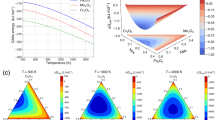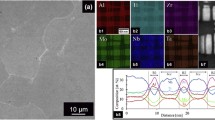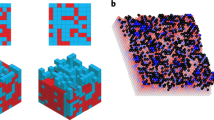Abstract
The conditions for the exclusive oxidation of the most-reactive component during the corrosion of binary, two-phase alloys by a single oxidant are reexamined by using a more correct form of the mass balance for this component. Moreover, the previous treatment is extended to include the case in which the transition falls in the range of alloy compositions corresponding to the stability of the single phase rich in the most-reactive component. The limiting conditions for the transition in the single and two-phase fields are examined and discussed.
Similar content being viewed by others
References
F. Gesmundo, F. Viani, Y. Niu, and D. L. Douglass,Oxid. Met. 40, 373 (1993).
W. Jost,Diffusion in Solids, Liquids, Gases (Academic Press, New York, 1960).
F. Gesmundo, F. Viani, Y. Niu, and D. L. Douglass,Oxid. Met. 42 (1994).
F. Gesmundoet al., to appear.
Author information
Authors and Affiliations
Rights and permissions
About this article
Cite this article
Gesmundo, F., Viani, F., Niu, Y. et al. An improved treatment of the conditions for the exclusive oxidation of the most-reactive component in the corrosion of two-phase alloys. Oxid Met 42, 465–483 (1994). https://doi.org/10.1007/BF01046761
Received:
Issue Date:
DOI: https://doi.org/10.1007/BF01046761




